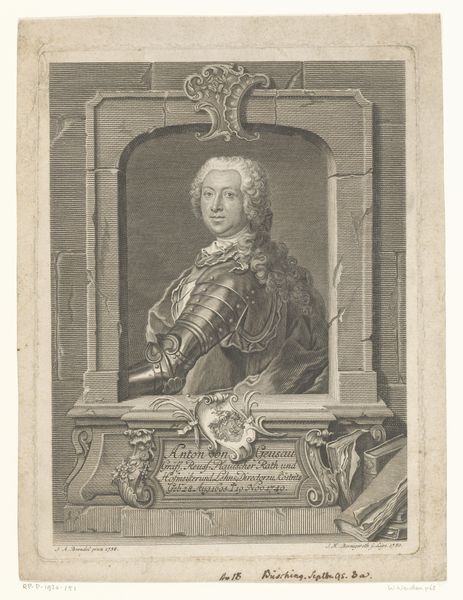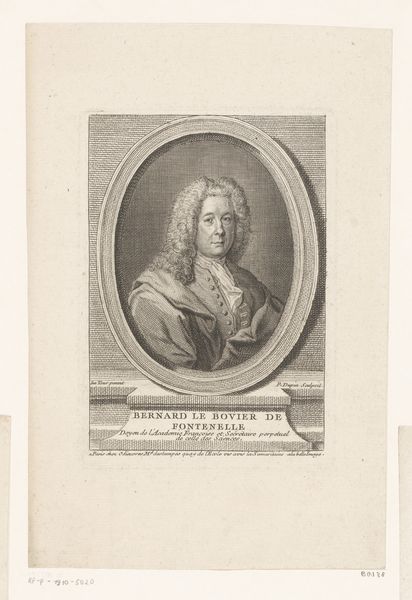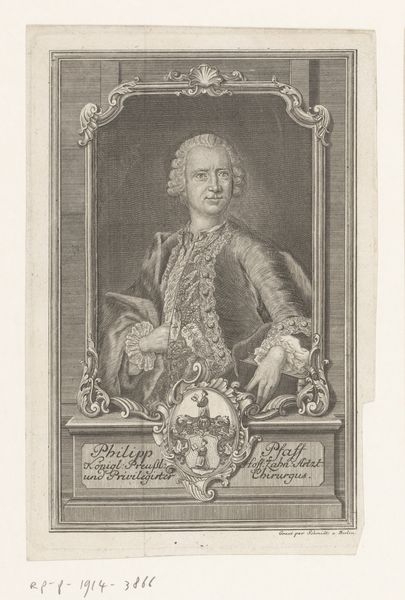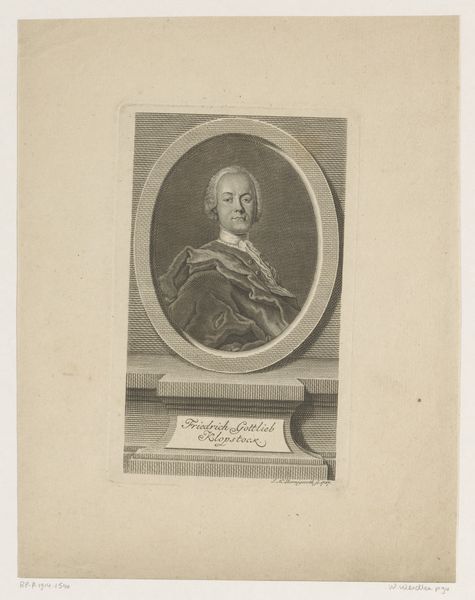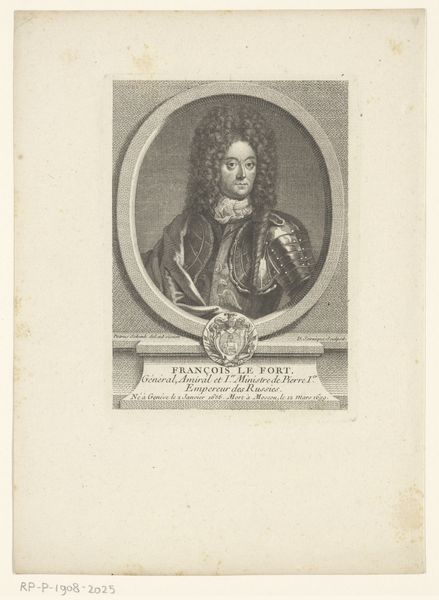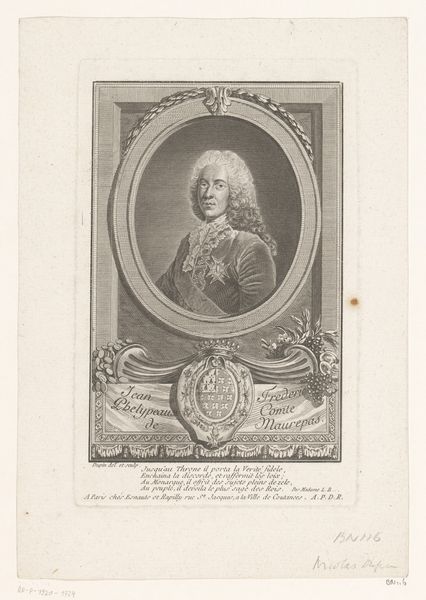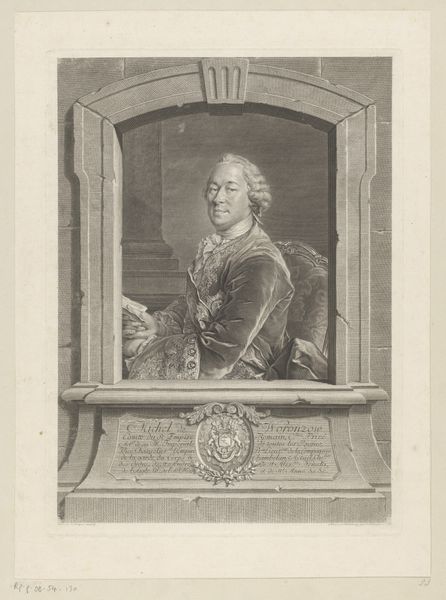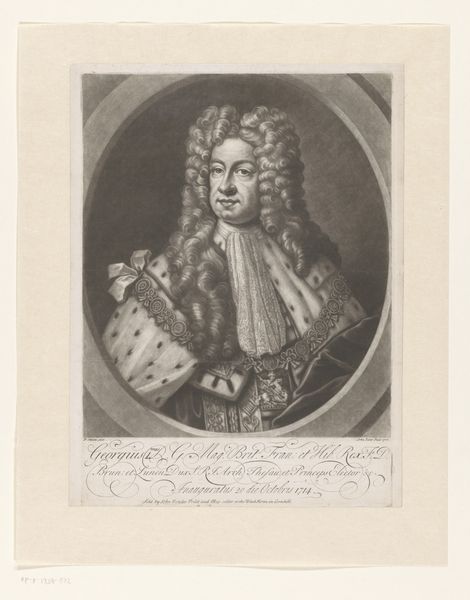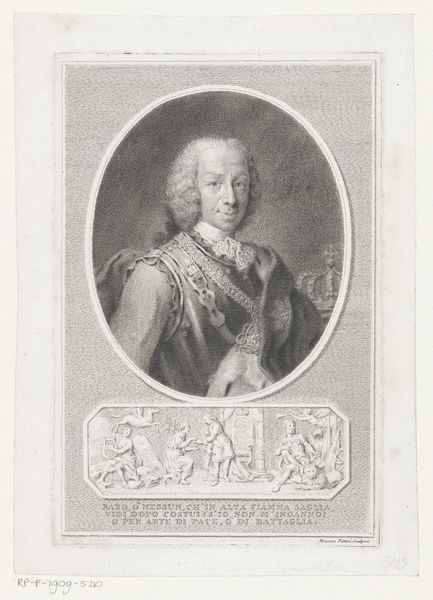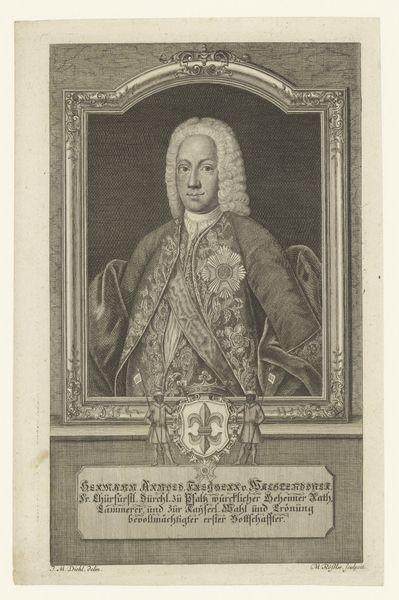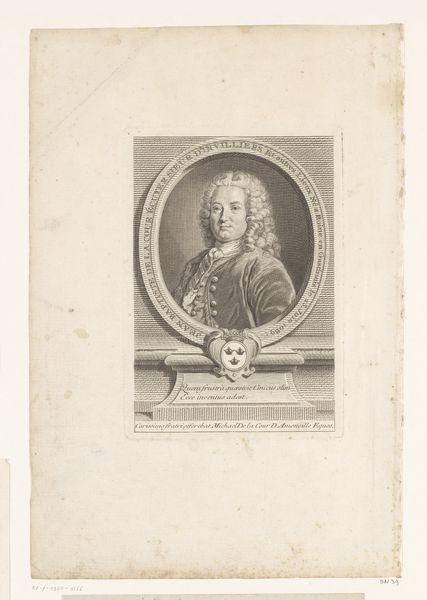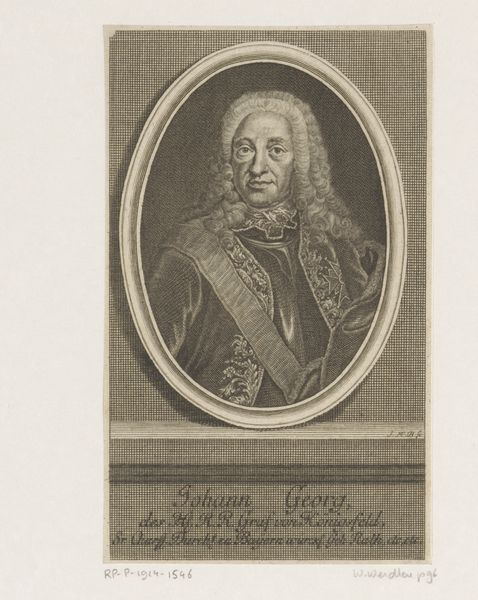
Portret van Frederik IV, koning van Denemarken en Noorwegen 1748
0:00
0:00
johannmartinpreissler
Rijksmuseum
print, engraving
#
portrait
#
baroque
# print
#
old engraving style
#
historical photography
#
engraving
Dimensions: height 335 mm, width 227 mm
Copyright: Rijks Museum: Open Domain
Curator: Ah, there’s a certain elegance in the lines of this engraving, isn't there? We're looking at "Portret van Frederik IV, koning van Denemarken en Noorwegen"—that's "Portrait of Frederick IV, King of Denmark and Norway"—rendered by Johann Martin Preissler in 1748. Editor: It strikes me as immediately unsettling. There's a strange kind of coldness in the subject’s eyes, a disquiet under all that royal finery. Curator: Interesting. Do you mean beyond the inherent distance that portraiture of rulers often carries? Editor: Precisely. Look at how he’s framed, quite literally put on a pedestal. It's Baroque ostentation, but there’s something defensive about it too, as if it were trying too hard to project authority. Considering the tumultuous politics of 18th-century Europe, I wonder about its symbolic power. Curator: Preissler uses line work so exquisitely; you almost feel the plushness of the ermine stole and the weight of those crowns on his cloak. It's tempting to see him as this remote figurehead, but I also sense a vulnerability there. The eyes are soft and slightly melancholic. It suggests more complexity, don't you think? Maybe he just misses his dog! Editor: (Laughs) Perhaps! But let's consider the broader narrative: portraiture served to legitimize power. An image like this circulated widely; it became a powerful form of propaganda at a time of war, royal houses intermarrying, treaties being made and broken, class revolts, new economic systems appearing on the horizon... It suggests questions of constructed identity, and how rulers manufactured the images of themselves that they wanted the world to see. Curator: Well, Johann Martin Preissler certainly helped solidify that manufactured image. The print would have been made for distribution, wouldn’t it? Reaching corners of the kingdom that could only dream of visiting the palace. Imagine having this portrait displayed in a local government building and being reminded, visually, every single day of royal power! Editor: Exactly! It wasn't merely an aesthetic exercise. It actively reinforced hierarchical systems. Think of the implications in a colonial context too; power traveling across nations as portraits legitimized imperial reach... Anyway, thanks for giving me some art-historical food for thought today! Curator: Likewise, my friend. These tiny details of this old engraving suddenly speak volumes... fascinating!
Comments
No comments
Be the first to comment and join the conversation on the ultimate creative platform.
